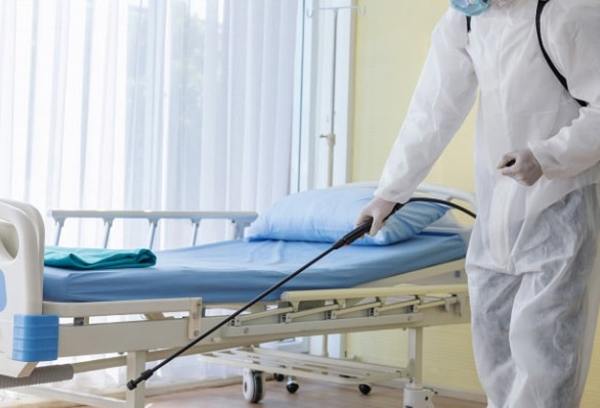Ensuring the proper cleaning and disinfection of medical equipment is crucial in healthcare settings. It not only protects patients from infections but also safeguards healthcare professionals. In this guide, we will outline the best practices for effectively cleaning and disinfecting medical equipment to meet safety standards and maintain hygiene.
1️⃣ Understanding the Difference Between Cleaning and Disinfection
Before diving into the methods, it’s important to differentiate between cleaning and disinfection.
- Cleaning refers to the removal of visible dirt, debris, and organic material. It’s typically done using soap and water or cleaning detergents.
- Disinfection involves using chemicals to kill pathogens and microorganisms that may not be visible to the naked eye.
Both steps are essential, and disinfection should always follow cleaning.
2️⃣ Step-by-Step Process for Cleaning Medical Equipment
– Pre-Cleaning
Start by wiping off any visible dirt or body fluids from the equipment using disposable cloths or wipes. This step is crucial for reducing the bio-burden on the surface.
– Dismantling Equipment
Some medical devices, such as ventilators or infusion pumps, need to be dismantled before cleaning to ensure every part is thoroughly cleaned. Always follow the manufacturer’s instructions when dismantling equipment.
– Cleaning with Detergents
Using approved medical-grade detergents, scrub the surface of the equipment. Be sure to focus on hard-to-reach areas and grooves. For sensitive equipment, such as surgical instruments, special brushes may be needed to clean intricate parts.
– Rinsing
After cleaning, rinse off any remaining detergent with clean water. Ensure that no detergent residues remain, as they may interfere with the disinfection process.
3️⃣ Disinfection Techniques for Medical Equipment
Once the equipment is clean, it’s time to move on to disinfection. The method used will depend on the type of medical equipment and the level of disinfection required.
Types of Disinfection:
High-Level Disinfection:
High-risk medical devices, such as those used in invasive procedures (e.g., endoscopes), require high-level disinfection. This process typically involves chemical disinfectants like glutaraldehyde or peracetic acid.
➤ High-Level Disinfection Methods:
- Immerse the equipment in a chemical disinfectant solution.
- Ensure the device is completely submerged for the recommended duration (usually around 30 minutes).
- Rinse the device with sterile water after the disinfection process.
Intermediate-Level Disinfection:
This level of disinfection is used for devices that come into contact with mucous membranes, such as thermometers and stethoscopes.
➤ Intermediate-Level Disinfection Methods:
- Use alcohol-based disinfectants or chlorine-based wipes.
- Wipe down the equipment thoroughly, allowing the solution to dry before the next use.
Low-Level Disinfection:
Devices that only contact intact skin, such as blood pressure cuffs, may only require low-level disinfection.
➤ Low-Level Disinfection Methods:
- Use quaternary ammonium compounds or diluted bleach solutions.
- Wipe the surface of the equipment and allow it to air dry.
4️⃣ Best Practices for Specific Medical Devices
➤ Stethoscopes:
After each patient interaction, wipe the stethoscope diaphragm and tubing with an alcohol-based disinfectant. This quick step prevents the transfer of pathogens between patients.
➤ Ultrasound Probes:
Use a medical-grade disinfectant wipe after every use, and periodically perform high-level disinfection depending on the probe’s application (e.g., internal vs. external use).
➤ IV Poles and Infusion Pumps:
Clean and disinfect IV poles and infusion pumps at least once a day, using intermediate-level disinfection methods.
5️⃣ Common Mistakes to Avoid
When cleaning and disinfecting medical equipment, it’s essential to avoid common mistakes that could compromise the process.
- Skipping cleaning before disinfection: Always clean the equipment first, as organic matter can reduce the effectiveness of disinfectants.
- Using the wrong disinfectant: Not all disinfectants are suitable for every type of equipment. Make sure you use an approved product that is safe for the specific medical device.
- Overlooking high-touch areas: Don’t forget to clean handles, buttons, and other parts of equipment that are frequently touched by hands.
6️⃣ How to Store Clean and Disinfected Equipment
Once the equipment is cleaned and disinfected, proper storage is key to preventing contamination. Store medical devices in a dry, sterile environment, and avoid leaving them exposed to potential contaminants.
Proper Storage Practices:
- Use covered trays or sealed pouches for sterile items.
- Keep equipment off the floor and store it in designated cabinets or drawers.
- Label equipment with the date it was last disinfected for easy tracking.
For businesses looking to outsource their medical cleaning and disinfection needs, consider professional services. Get a free quote for disinfection services here.

